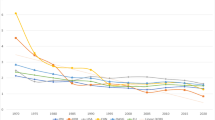Abstract
To address the problematic situation of higher education affordability, and literacy, President Obama has recently outlined a new strategy to make colleges more affordable for the middle class. While this strategy includes many components, “Paying for Performance” is a core components of this new strategy. In recent years, states have also focused on performance based policies to influence the behaviour of higher education institutions. However, most impact assessment studies have shown that such policies have had a limited effect on the performance of these institutions. Most explanations given for this failure have been on the basis of principal-agent theory, resource dependence theory and neo-institutionalism. All these analyses tend to view universities in isolation of their real world ecology. Drawing from the insights of ecology of games perspective, this paper explains the failure of performance based funding policies in terms of the inherent complexity of the higher education system. Policy design implications like flexibility, symbolic contextualization and decentralized financial governance for higher education governance are also discussed.
Similar content being viewed by others
Notes
Emphasis in original article.
Emphasis in original article.
Measuring Up is a national report prepared by National Center for Public Policy and Higher Education and includes report cards for each state in the following five areas of higher education: preparation, participation, affordability, completion, and benefits.
For a detailed discussion of formal and informal constraints and their effect on institutions, see North (1990).
Mark Lubell has refined this process further by borrowing from the literature on bounded rationality and selective attention from psychology and organizational studies. For further details, please see Lubell, M. (2013). Governing Institutional Complexity: The Ecology of Games Framework. Policy Studies Journal, 41(3), 537-559.
Some of these are based on the analysis of Firestone (1989). Educational policy as an ecology of games. Educational Researcher, 18(7), 18-24.
References
Alexander, F. K. (2000). The changing face of accountability: Monitoring and assessing institutional performance in higher education. Journal of Higher Education, 411–431.
Barker, K. (2007). The UK research assessment exercise: The evolution of a national research evaluation system. Research Evaluation, 16(1), 3–12.
Barnett, R. (1992). Improving higher education: Total quality care. ERIC.
Baum, S., Ma, J., & Payea, K. (2013). Education pays 2013: The benefits of higher education for individuals and society.
Bozeman, B. (1984). Dimensions of “publicness”: An approach to public organization theory. In B. Bozeman & J. Straussman (Eds.), New directions in public administration. Monterey, CA: Brooks/Cole.
Brennan, J., & Shah, T. (2000). Quality assessment and institutional change: Experiences from 14 countries. Higher Education, 40(3), 331–349.
Burke, J. C., & Henrik, P. (2003). Performance reporting: “real” accountability or accountability “lite”: seventh annual survey 2003. Albany, N.Y.: Nelson A. Rockefeller Institute of Government, State University of New York.
Carnegie Foundation for the Advancement of Teaching. (2001). The Carnegie classification of institutions of higher education. Menlo Park, CA: Carnegie Foundation for the Advancement of Teaching.
Center for World-Class Universities of Shanghai Jiao Tong University. (2013, November 28). Academic ranking of world universities 2013. Retrieved from Academic Ranking of World Universities: http://www.shanghairanking.com/ARWU2013.html.
Dobbins, M., Knill, C., & Vögtle, E. M. (2011). An analytical framework for the cross-country comparison of higher education governance. Higher Education, 62(5), 665–683.
Dougherty, K., & Reddy V. (2011). The impacts of state performance funding systems on higher education institutions: Research literature review and policy recommendations. CCRC Working Paper No. 37, Community College Research Center. CCRC Publications. Teachers College, Columbia University, New York, NY. http://www.tc.columbia.edu/ccrc.
Dougherty, K. J., Natow, R. S., & Vega, B. E. (2012). Popular but unstable: Explaining why state performance funding systems in the United States often do not persist. Teachers College Record, 114(3), 1–42.
Dutton, W. H. (1992). The ecology of games shaping telecommunications policy. Communication Theory, 2(4), 303–328.
Feller, I. (2002). Performance measurement redux. American Journal of Evaluation, 23(4), 435–452.
Firestone, W. A. (1989). Educational policy as an ecology of games. Educational Researcher, 18(7), 18–24.
Gillen, A. (2012). Introducing Bennett Hypothesis 2.0. Center for College Affordability and Productivity.
Goldberger, M. L., Maher, B. A., & Flattau, P. E. (1995). Research-doctorate programs in the United States: Continuity and change. Washington, D.C.: National Academy Press.
Harman, G. (2000). Allocating research infrastructure grants in post-binary higher education systems: British and Australian approaches. Journal of Higher Education Policy and Management, 22(2), 111–126.
Harnisch, T. L. (2011). Performance-based funding: A re-emerging strategy in public higher education financing. Washington, DC: American Association of State Colleges and Universities.
Hearn, J. C., Lewis, D. R., Kallsen, L., Holdsworth, J. M., & Jones, L. M. (2006). “ Incentives for managed growth”: A case study of incentives-based planning and budgeting in a large public research university. The Journal of Higher Education, 77(2), 286–316.
Heinrich, C. J., & Marschke, G. (2010). Incentives and their dynamics in public sector performance management systems. Journal of Policy Analysis and Management, 29(1), 183–208.
Hicks, D. (2012). Performance-based university research funding systems. Research Policy, 41(2), 251–261.
House, E. R. (1980). Evaluating with validity. Beverly Hills, CA: Sage.
Huisman, J., & Currie, J. (2004). Accountability in higher education: Bridge over troubled water? Higher Education, 48(4), 529–551.
Jenkins, H. (1995). Education and production in the United Kingdom. Oxford: Nuffield College.
Jones, L. V., Lindzey, G., & Coggeshall, P. E. (1982). An assessment of research-doctorate programs in the United States. Washington, DC: National Academy Press.
Long, N. E. (1958). The local community as an ecology of games. American Journal of Sociology, 251–261.
Lubell, M. (2013). Governing institutional complexity: The ecology of games framework. Policy Studies Journal, 41(3), 537–559.
Lubell, M., Henry, A. D., & McCoy, M. (2010). Collaborative institutions in an ecology of games. American Journal of Political Science, 54(2), 287–300.
Martinez, M. C., & Nilson, M. (2006). Assessing the connection between higher education policy and performance. Educational Policy, 20(2), 299–322.
Matthews, C. M (2012). Federal support for academic research. from http://www.cq.com/pdf/crsreports-4019937.
McLendon, M. K., Hearn, J. C., & Deaton, R. (2006). Called to account: Analyzing the origins and spread of state performance-accountability policies for higher education. Educational Evaluation and Policy Analysis, 28(1), 1–24.
Mendel, S. C. (2003). The ecology of games between public policy and private action: Nonprofit community organizations as bridging and mediating institutions. Nonprofit Management and Leadership, 13(3), 229–236.
Moulton, S. (2009). Putting together the publicness puzzle: A framework for realized publicness. Public Administration Review, 69(5), 889–900.
Moynihan, D. P. (2008). The dynamics of performance management: Constructing information and reform: Georgetown University Press.
National Conference of State Legislatures. (2013, November 28). Performance Based Funding for Higher Education. Retrieved from National Conference of State Legislatures: http://www.ncsl.org/research/education/performance-funding.aspx.
North, D. C. (1990). Institutions, institutional change and economic performance. New York: Cambridge University Press.
Office of the Press Secretary, White House. (2013, November 28). FACT SHEET on the President’s plan to make college more affordable: A better bargain for the middle class. Retrieved from The White House: http://www.whitehouse.gov/the-press-office/2013/08/22/fact-sheet-president-s-plan-make-college-more-affordable-better-bargain.
Ontario Confederation of University Faculty Associations. (2006). Performance indicator use in Canada, the U.S. and abroad. from http://site.ebrary.com/id/10133574.
Organisation for Economic Co-operation and, Development. (2012). Education at a glance 2012 OECD indicators. http://www.oecd.org/edu/EAG2012_e-book_EN_200912.pdf .
Ostriker, J. P., Kuh, C. V., & Voytuk, J. A. (2010). A data-based assessment of research doctorate programs in the United States. Washington, DC: National Academies Press.
Quacquarelli Symonds. (2013, November 28). QS World University Rankings. Retrieved from Top Universities: http://www.topuniversities.com/qs-world-university-rankings.
Rabovsky, T. M. (2012). Accountability in higher education: Exploring impacts on state budgets and institutional spending patterns. Journal of Public Administration Research and Theory, 22(4), 675–700.
Sanford, T., & Hunter, J. M. (2011). Impact of performance-funding on retention and graduation rates. Education Policy Analysis Archives, 19(33).
Shin, J. C. (2010). Impacts of performance-based accountability on institutional performance in the US. Higher Education, 60(1), 47–68.
Times Higher Education. (2013, November 28). World university rankings 2013–14. Retrieved from The Higher Education World University Rankings: http://www.timeshighereducation.co.uk/world-university-rankings/2013-14/world-ranking.
University of Washington. (2013, November 28). Full economic impact University of Washington. Retrieved from University of Washington: http://www.washington.edu/externalaffairs/files/2012/10/eir_full_report.pdf.
Volkwein, J. F., & Tandberg, D. A. (2008). Measuring up: Examining the connections among state structural characteristics, regulatory practices, and performance. Research in Higher Education, 49(2), 180–197.
Acknowledgments
I would like to thank Yushim Kim, Ayesha Masood and the anonymous reviewers for their valuable insights and comments on the earlier drafts of this paper.
Author information
Authors and Affiliations
Corresponding author
Rights and permissions
About this article
Cite this article
Nisar, M.A. Higher education governance and performance based funding as an ecology of games. High Educ 69, 289–302 (2015). https://doi.org/10.1007/s10734-014-9775-4
Published:
Issue Date:
DOI: https://doi.org/10.1007/s10734-014-9775-4




